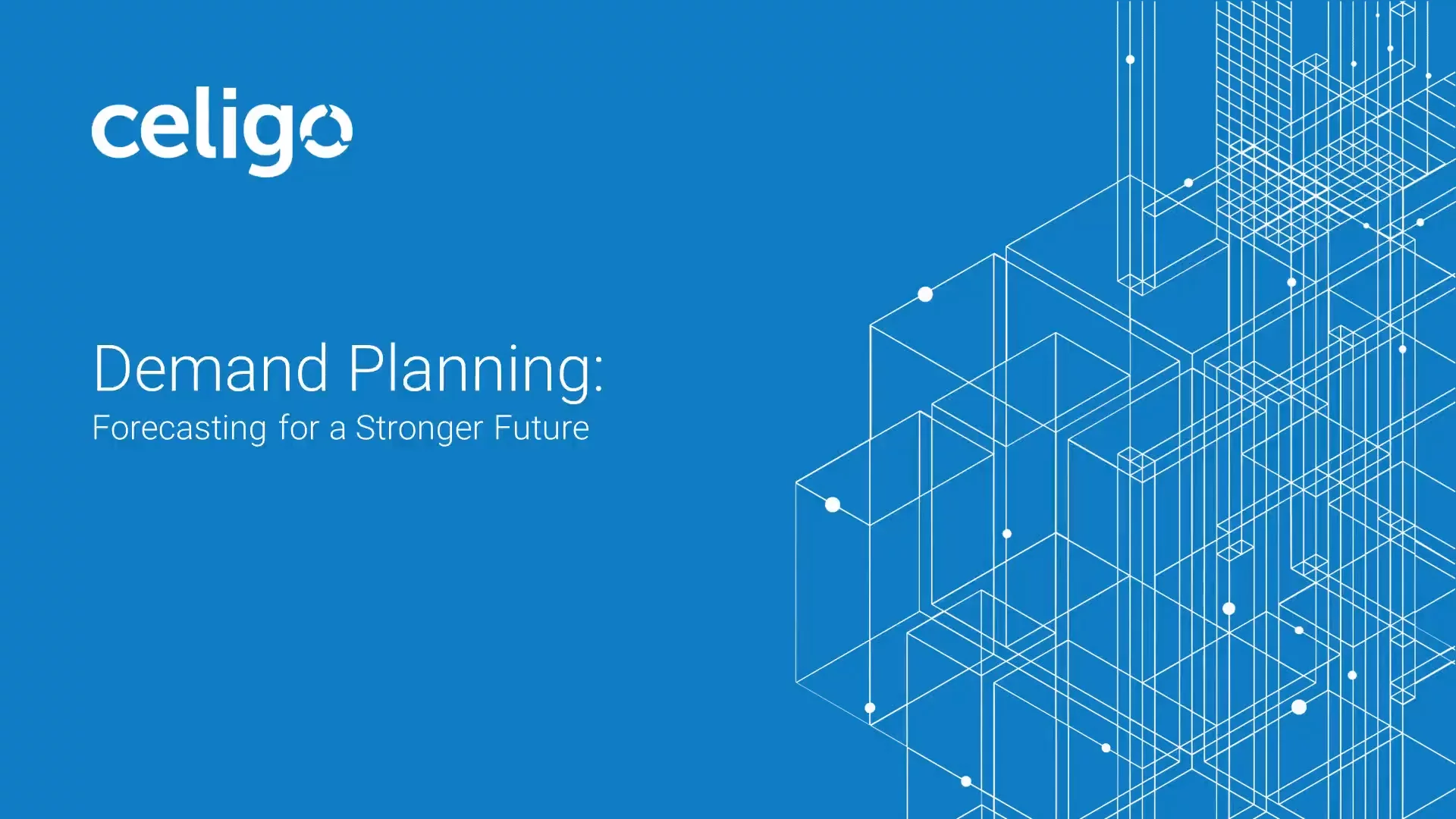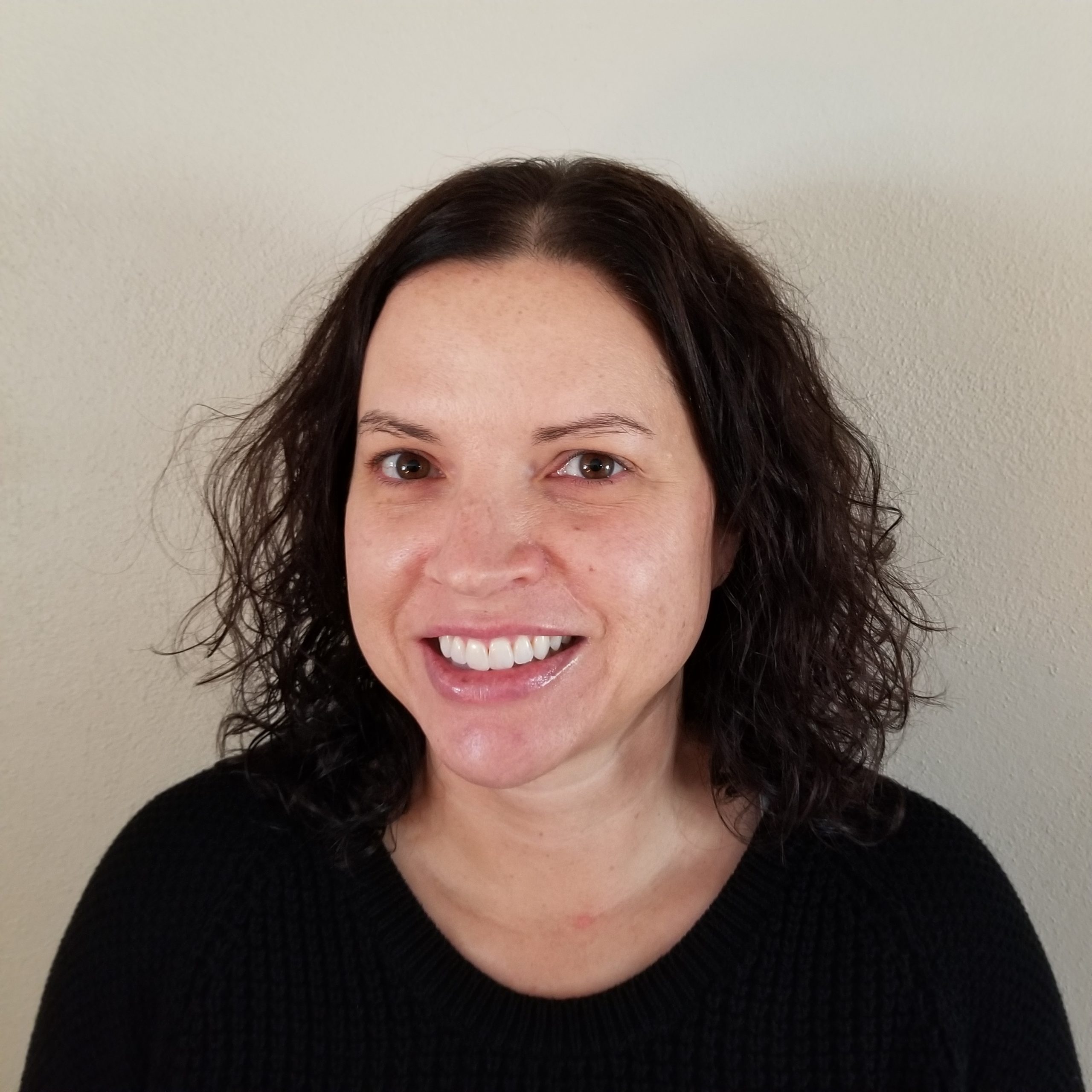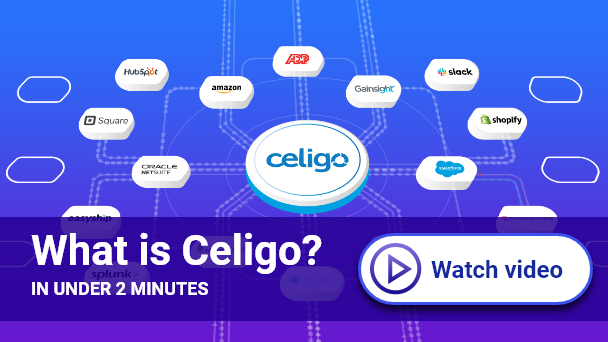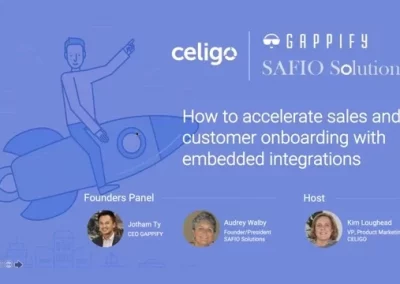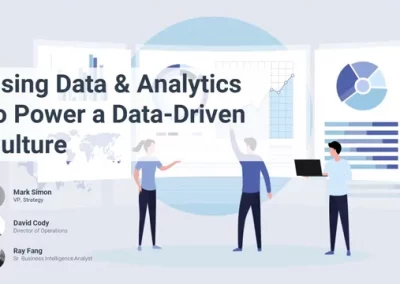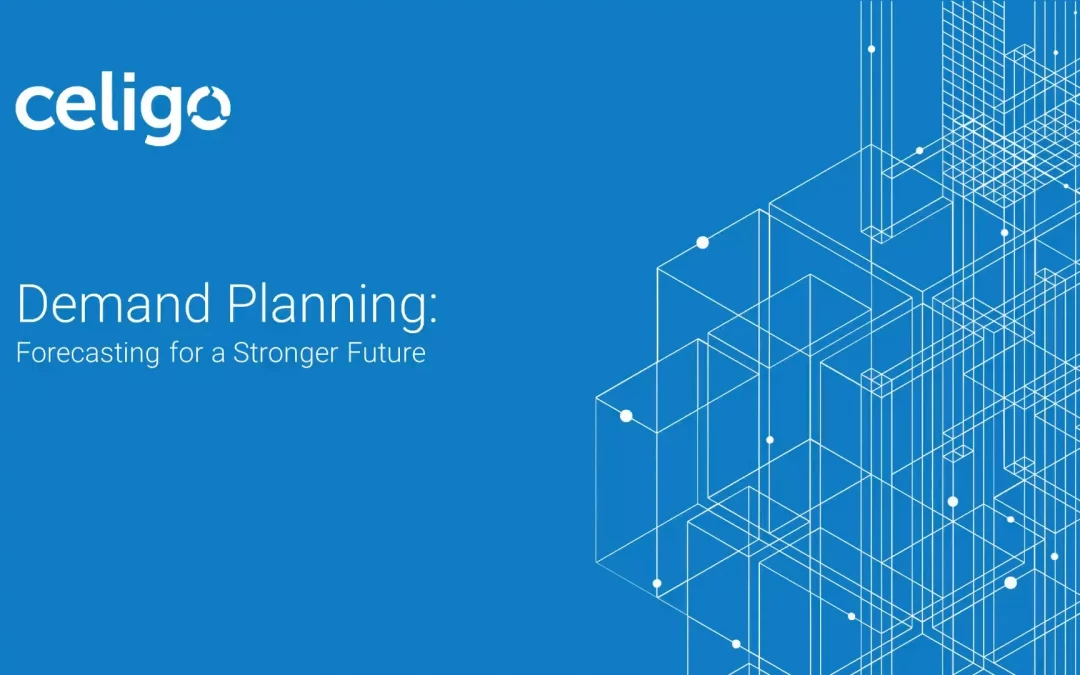Full Webinar Transcript
Hello, everyone. Thank you for joining us today for our webinar. Demand planning, Forecasting for a Stronger 2021. My name is Kristie Conner, and I am the Director of Product Marketing for our integration platform Celigo Integrator.io. Today, my role is moderator, and we have a fantastic lineup of panelists who are here to help us better understand demand planning, the business value of automating demand planning, and we’ll also get to hear about how demand planning can help companies of all sizes manage during uncertain times. And then we’ll take a deeper dive into some of the backend systems, the vital data, and how to unlock that data to move a business forward. But first, I’d like to do a few housekeeping items. One, this webinar is recorded and will be available on-demand, so you’ll all receive a link. Two, we want the session to be interactive, so please feel free to post your questions in the chat box, and if possible, I will answer them as we’re going through the discussion with our panel. Otherwise, we’ll get to them at the end of the Q&A– at the end with the Q&A. So I’m really excited and grateful to get to spend the next several minutes with our customer SAFIO Solutions CEO and founder Audrey Walby. And what makes this panel even more dynamic is that we have two of Audrey’s customers here as well. We have Than Ruyle , the CEO of WodBottom, an e-commerce company that sells women’s athletic apparel, and we have Penny Finn, inventory manager at Unique. Unique is a premier designer and supplier of picture frames and home décor. I will give them the opportunity in a few minutes to even go more into their roles and their companies. Our panel is really a great mix. We have a fast-growing e-commerce business and an established enterprise company, a software provider, and thought leader with Audrey Walby. This will give us a unique opportunity to hear and learn how companies are using SAFIO Solutions for automating demand planning to drive their business forward. Quickly, in case you are new just Celigo, I just want to take a second to introduce us. Celigo is an integration company. Celigo Integrator.io is our integration platform as a service, IPaaS. We help our customers with their integration challenges, like integrating applications to automate business processes like demand planning. We have prebuilt integrations to over 190 of the most widely used SaaS applications, and this is just a quick list of some of those. We also have templates to help jumpstart your integration and integration-applications that leverage best practices and are really actually product types integrations. In the case of SAFIO, they use Celigo to help onboard their customers faster by using Celigo Integrator.io to integrate key systems and applications, like e-commerce platforms, marketplaces, 3PL, and we’ll get into that a little bit later. So I would love to turn this over and let each of our panelists give a little brief intro on their experience and their companies. So, Audrey, would you like to kick that off? Sure. Thank you, Kristie, for hosting this webinar. It’s great to be here today. Throughout my career, I’ve been a planner and merchant executive in various channels of business. And everywhere that I worked, an automated forecasting process was not available. And this made forecasting painful with the data scattered in multiple silos, using multiple spreadsheets in no concise vision of the data so that I could make strategic business decisions. And that was what prompted me to develop a forecasting tool, first in Excel and then as I moved through my career, it morphed into Access database to increase the data size and more automation. And now what we’ve done is we’ve taken that version, and the current version is a web-based platform posted in the cloud with data analytics. And so we’re a company that loves to help companies get to forecasting and planning better and more efficient. Thank you. Thank you. Great. Thank you, Audrey. Than, would you like to give a quick intro, please? Sure. Hello everyone, and thanks for having me, Kristy and Audrey. As Kristy said, my name’s Than Ruyle. I’m the co-owner and CEO at WodBottom. And at WodBottom, we create quality fun functional athletic apparel for women who want to add personality to their workout. We’re also proud supporters of DAIS which is Domestic Abuse Intervention Services, and our mission is to raise awareness about domestic abuse and remove the shame felt by survivors by open dialogue and building a community. So thanks. Yes. Thank you, Than. Thanks for that overview. Penny? Thank you for having me today, Kristy and Audrey. My name is Penny Finn. I work for a company outside of Madison, Wisconsin called Unique Inc. We’re a home decor company that sells to both brick and mortar and e-commerce channel. And then prior to holding the inventory manager position I have now, I was a forecast analyst at Unique, and I’ve been there for 16 years. Thank you. Great. Thank you, all. And I think the audience can tell we have great depth and breadth on the panels. So with that, I’d like to start the panel off with the question of what is– Audrey, can you highlight what demand planning is the definition so we all kind of have the same definition and we can share that with the audience? Sure. Demand planning is a process of forecasting products to ensure that they can be delivered at the right time in the right amount. And what you want to do is satisfy your customers but not have too much so that it really puts a strain on your cash flow. So it’s a very fine balancing act between not having enough and having too much. A variety of factors can influence the supply chain and the consumer demand. And some of these factors are government regulations, weather, commodity shortages, transportation disruptions, and a pandemic. And currently, for example, there is a container disruption where the containers are booked solid for the next four months. And as a planner, a person has to keep up with all these moving components to demand planning. And forecasting platform and human intervention or required. Great. Thank you, Audrey. Than or Penny. I don’t know if you have anything to add to what Audrey said, to add any color? Yeah. I mean, so we started using SAFIO really because we had such an issue with demand planning. Before using them, I really felt like I was throwing at a dart board with my eyes closed. And as the CEO of our business, which is really scaling rapidly, it was like all the data was just scattered between spreadsheets, different platforms, and we just needed everything organized in one place, and Sapphire allows us to do that, so we’re really happy about that. That’s great so, Audrey, one question, I think, that would be awesome to start off with to add kind of the foundation is, who benefits from demand planning? Than and Penny: Than comes from an e-commerce, and Penny comes from an enterprise. So what size of company benefits from demand planning? Well, all companies can benefit from demand planning if they have inventory. And whether you’re starting out as an entrepreneur in an e-commerce business, your cash flow is going to be tight, and that’s what’s really important. And so what you want to do is maximize your dollars and have the proper planning so that you can buy the great products that are trending up, and if you see products that aren’t working out, you can address them through markdowns and move on. And that’s really critical, especially in a new business. Then, as you grow and become omnichannel, and suddenly, you have multiple marketplaces like Amazon and Shopify, and you may have QuickBooks, you have multiple connection points, you have data in three different places now, it becomes really important to be efficient because chances are your team is still relatively small. And so what you’re doing is pulling all of that data together to put it in a demand planning process and organize it. And then, as an enterprise client, you become larger, and you have more complexity. Perhaps you’re selling internationally, you have your own warehouse, you have a production line. And so it’s very important to have demand planning so that the warehouse can be staged appropriately so that Human Resources know when to build temporary help, and be able to get that temporary help there, also, when the sales peak. And that’s how you really optimize your business and grow your business very profitably by having the vision in a forecasting tool. So basically, right now our range of clients are between 60 SKUs all the way up to 11,000, and their sales volume ranges from hundreds of thousands to over 100 million. So you can see it really is very successful in all businesses, and the sooner that you can implement a demand planning process, the better because you’re organizing all of your processes together. And inventory is usually the largest asset or the second largest asset, next to your employee payroll, so it’s very important that you manage your inventory dollars for the health of the company. And optimizing that inventory is vital to all sizes. Thank you, Audrey. I think one of the things that you and I had discussed earlier is, you had basically said that almost every part of the business is impacted by demand planning, from projecting what kind of warehouse space you need– maybe you can, obviously, say that way more eloquently than me. Maybe just if you could touch on that a little bit. Sure. So I briefly touched on the warehouse knowing when to build their temporary help based on their receipts. And also based on their projected sales, a demand forecasting tool can help a distribution center with that help. Also, for accounting, preparing quarterly inventory reports in that forecasting tool can help the accounting department look at the financials ahead of time and have a true forecast of what’s really happening. And then using the forecasting attributes, the product development team can actually look at the top three attributes that are forecasting well across multiple products and look for whitespace to see if perhaps you can develop a new product to fill that whitespace. And then you always have the sales team that wants the confidence that the orders have been placed so that their sales orders get filled, so you can have the sales force also looking at how the planning is going and also contributing to the forecasting by inputting their accounts forecasts to help the planners get an overall view. So that’s really important to the sales department. So then, overall, the company can usually appreciate increased profits and improve turns when all of these areas come together. That’s great. So just to sum up, demand planning has a positive impact when implemented on every part of the organization. So, Audrey, I guess this is kind of a reiteration or a different way of asking, but what is the primary reason people automate the business process of demand planning? Well, when the process is not automated, you have multiple silos of information and sometimes they’re even in different formats. And the only way to bring them together is with multiple spreadsheets with VLOOKUPS, and that’s a very unproductive complex process that is usually very painful to the planner. And so what is vital in proper planning is to take all that data, bring it together at a consistent time in consistent formats so that the entire company is looking at the same data that was pulled in the same timeframe. And without having that visibility, that can lead to delayed or bad business decisions because you might miss canceling a PO that’s a season item that’s going to be late. And if you’re getting your Christmas item after Christmas, that’s not a good thing. So you need to have that visibility. And so the whole purpose of an automated planning system is the core value’s removing all that complexity and to have data right at your fingertips to make those important strategic decisions. Great. Thank you. One of the things that comes to mind to me as one of your customers is the amount of time you must save as– in your role, Penny; and your role, [Fin?]. Could either of you talk about that and what it’s like to have the data going from how you did have it to having it in a singular location? Sure. So as I said before, we were using lots of different spreadsheets. We are a small company, though I feel like we have a very big footprint because we are posted on several different platforms. We do sell internationally. So it was a mess. That’s the best way to describe it before we started using SAFIO. Now we just have a clear organization, all the data’s in one place, we’re able to recognize opportunities, and help us have a clear plan to address our liabilities, things that we aren’t selling through as fast as we would like, and they’ve helped improve our inventory turnover. So I mean, it’s been really fantastic. I’m sure Penny can add to that [laughter], as well. Yes, we were looking to expand our e-commerce business. And we were struggling to forecast the number of skews we were adding. And we’ve previously been using a third-party software in combination with our ERP in combination with a database and spreadsheet. So having a singular view of all of that information that gets updated daily, that’s been a big benefit for us for managing our inventory. Great, thank you, both. So I think, to move to the next question, I’d like to segue into how the need for demand planning has really been amplified in 2020. Audrey, would you like to maybe highlight a few key areas that you’ve seen? And then, we’ll pull in Penny and Than into the conversation. But in 2020, what has really been amplified? Okay, there’s been a huge supply chain disruption caused by the pandemic. There were slowdowns or work stoppages overseas in the Orient. There have been tariffs, revised trade agreements, making it more beneficial to perhaps source in different areas. And this all causes merchants to review what they’re doing and what their lead times are. The pandemic also has caused an explosion of e-commerce. And according to Statista, e-commerce sales represented 11.8% of total retail sales at the end of Q1 in 2020. Already, by the end of Q2, they accounted for 16.1% of total retail sales. And that growth represented what actually went on in the last five years. So you can see the explosion from one quarter to the other was actually equivalent to five-year growth in e-commerce. And then, also, you have teams that are now working from home or individual locations. And there’s a need to have that consistent data refreshed daily to provide the vision available because of this supply chain disruption and changes in the purchase orders and lead times. So you have to have consistent information to make those strategic business decisions and account for supply and consumer demand ships. So those would be three big areas of how demand planning has really been amplified in 2020. And Audrey, I think that you had shared a story with me around working from home and having consistent data refreshed frequently in real-time. And I think that goes back to the data visualization SAFIO gives our customers. Can you repeat that story for us? Sure. So, just prior to the lockdowns or work-at-homes, we were onboarding a couple large clients. And one of the clients was pulling information together only two times a month. Because it was such a large amount of data, it literally took them two weeks to pull their data together. And so, they were only seeing updates every two weeks. And at that stage, the data was already two weeks old. So, when we started with the SAFIO Solutions forecasting system the lockdown. It was really a relief to them that all their team members were now scattered but were able to look at the data on a daily basis refreshed and know that everybody’s looking at the same data so that if there is a discussion, there isn’t any conversation about where you can get your data from and what time did you pull it. It was all pulled at the same time. It was consistent and was very helpful. So that allows them to make strategic decisions looking at the same data at the same time, and a daily refresh which is much more actionable than data pulled only once every two weeks. So one of the things that we’ve talked about among us that I think would be really great to highlight is how companies can improve lead times based on– obviously, there are a lot of different things that happen in the supply chain, but with your application, you can get better at managing lead times. And I think it would be great to hear maybe Than’s perspective on that and any stories or examples you have. Sure. I guess as Audrey mentioned earlier, in 2020, we have seen our lead times just sourcing, I guess, change dramatically. Commodities like cotton have been in rare demand. So it’s been harder to receive those. So we’ve had to– using the tool, we’ve had to see– we’ve seen the visibility in our trends. And we’ve been able to have the confidence, I guess, to plan ahead and purchase more cotton T-shirts than we would normally do by reading the trends. And we’re able to– other things that we’re doing is we’ve shifted our sourcing to Columbia for shorter lead times, and just having that visibility and the ability to change lead times in the tool and see those trends really gives us the confidence to make the best buying decisions and make those changes when we need to. Right. And, Henny, do you have more to add to what [inaudible] is saying or add any color commentary? We see a similar benefit with the trend scenario that [inaudible] offers because we were able to identify some ships, and we called it COID shopping trends because people were stuck at home and working from home. So we thought increases in several product categories were unexpected such as photo albums because people are at home dust and dust organizations because people are now working from home and they need to set up a work center there. And I think people were just decorating too. So e-commerce definitely benefited from people being at home, and it allowed us to identify those trends early and to get our product on order to try to replenish them as quickly as possible. That’s a good example. And so, Audrey, I think it’d be really awesome if you could talk about trends scenario and the feature itself for our audience. Okay. The trend scenario is a feature that allows a planner, and it’s like a second set of eyes to confirm the current trend and provide the planner with more confidence. So a planner may select one of the 13 weeks that will bring up the sales history for the previous one, the 13 weeks and the actual weighting of what those weeks represent. And then it will confirm the forecast going forward so that the planner has the confidence to make the move in and either buy more product or say this actually is not working out and maybe we need to cancel what’s on order instead of having a liability. And it also allows you to look at short trends. So if you had a promotion or new product that was introduced in the last two weeks, you can look at the trends scenario for the previous two weeks and immediately identify what your potential to sell more is. And then I think you have an example of that with the Taco Libre short which was on a really tight window. Yeah, absolutely. Yeah, Emily, who is the head of our product development team. She created a shorty, that’s what we call our shorts, called Taco Libre, and it was a taco themed short that had even Tequila some other– it’s so popular. We ended up selling it presale, and we had only originally about 250, I think, and we sold them through preorder and they sold out completely. So then we were able to recognize this opportunity, and using the forecasting tool, we ended up buying I believe 700 more, and we sold all those as well. And without staff, we would have definitely missed that opportunity. Yeah, I mean, that’s a great example right there, Audrey. Thanks for bringing that up. That is a great example. And I was wondering, I was on your site, and I was seeing your seasonal shorts too. I mean, you have some really great stuff. Does the trend scenario help with those as well? Yeah, absolutely. I mean, even before we were using Sapphire, we overbought often with our Christmas stuff, and then it tied up cash flow for months and months. So now we just have such a better handle on our data and are able to make the correct buying decisions and take action sooner. And also when we see things that aren’t moving well, we’re able to recognize that sooner and get rid of those faster by moving them to a sale item item. And so forth. That’s awesome. That’s really great. So before I kind of move on to the next question given that through this conversation and other conversations I’ve had with you guys it’s fun to kind of hear some of the things that you’ve both– and Penny kind of touched on. But what you saw during COVID and any trends you see into the future based on the data that you’re getting, is there anything that you both could just add to bring up? Penny, do you want to take this one? Sure. We’ve also seen shopping trends on the brick and mortar side where people were, and some of it was related to when the stimulus money was received. We weren’t expecting that people would necessarily spend the stimulus money on the core items but they did, and we were very surprised by that. And then that kind of stayed true throughout the summer and fall. And now we are curious to see what the Christmas season brings. Yes, I was hoping to get some ideas for Christmas. So I guess you know a really logical next question is what did you both do before us before SAFIO Solutions? How were you doing your demand planning prior to SAFIO? Yeah. I think I mentioned before we were using Google Sheets, Excel, Shopify reports. That’s the Amazon reporting. Whatever we could do and you know there was just so much different information in different places and it’s hard to get everything together, especially for us. You know that we have quite a few SKUs. And then selling on– right now we’re on four different platforms. It made it quite confusing especially for a small business like us. And so yeah. And for Unique, like I mentioned before, we were using various data sources, so it wasn’t all on one that we have an ERP system, we had a point of sale database. We had– using vendor information like vendor portal information. So we were using lots of spreadsheets and having [Safir?] put everything in one spot and it makes your decision- making more databases instead of trying to pull it all together and hopefully you didn’t make an error pulling the information. Right. Thank you both. Audrey, I think one of the things that’s come up a little bit and just our conversation here about– also I found it really interesting that many organizations still use Excel spreadsheets. I’d love for you to kind of give your insights into that and what size companies are using Excel spreadsheets. Sure. We talk to and have helped companies anywhere in the range from startup to billion-dollar corporations that were using Excel spreadsheets to do their demand planning. And it is a very painful process. And even these larger corporations that have ERP systems where they have data and multiple silos, they sometimes just haven’t gotten around to automating their planning system. And so they’ve reached out to us and like I said it’s amazing the amount of the large corporations out there. Very famous brand names that have reached out and are still using Excel spreadsheets. So if your company is using Excel spreadsheets, contact us and let us help ease your pain because a lot of times you know– one company had a hundred and thirty-eight columns of information that their planners were looking at and then maybe 10,000rows. Well that’s after somebody has done multiple VLOOKUPs. And then usually what happens is a spreadsheet that big locks up or gets corroded and it just doesn’t work anymore and then you have to start over. I mean, that’s just some of the pain that you go through trying to get all the data put together to make the best strategic business decision. So we’re here to help you ease that pain, to make the connection points, and make your job more efficient and make you happy to go into work. I think one of the questions that I had originally is, so when does a company know they are ready to automate demand planning? Okay. So generally, you’re ready to automate demand planning as soon as a company has inventory. That’s the right time to start because the longer you wait, you’re going to have more additional add-on. So for example, you might start selling in Shopify. And it might seem simple but then there’s a demand process. “Do I have enough of this item that’s trending up or do I have too much of this seasonal item? It’s going to cost me money.” So that’s at a simple level. You’re in one marketplace, but you still have a demand planning issue. Then what happens is your business grows and you start selling on Amazon or eBay or Walmart and then things become complicated because your data is in multiple locations. You’re doing well, your business is growing, but you have four data streams. You have to pool them together. They’re not always in the same format. You might use different SKUs on Walmart than you do on Shopify. So then you have to figure out your SKU mapping. And so even though you started out with a nice business on Shopify and then now it’s growing, things are getting more and more complicated. And before you get to those levels, it’s good to have a forecasting system in place because– a forecasting system because it touches so many other areas of the company, helps you organize your flow process at the company as well. And so the sooner you can implement a forecasting system– you’ll help yourself organize your business also. And otherwise, what happens is you start to grow and you have all these multiple data sources and you’re creating this big tangled hairball. The more connection points you have, the more difficult it is to untangle and organize. And so I would say that as soon as a company has inventory, that’s the right time for a planning tool because, without that visibility, you can run into a cash flow problem. Right. Thank you, Than. So one of the values that you’ve all highlighted is really demand planning helps you have the right product at the right time. So one of the key pieces about that is what is that data that is in different systems and applications that needs to be integrated. And so I thought it would be great to have you talk about that data and the systems and applications that need to be integrated so that you can get the right information into SAFIO solutions for your customers Okay. So for proper demand forecasting, all these various data points are needed, for example, purchase orders because you want to know what you have on hand and when it’s coming in and will it meet the demand. You need to know who your vendors are and what their lead times are for each SKU so that our opportunity alerts can trigger in time so that it will tell you to look at this item and order before you run out. And so vendor information is very critical. Receipts, you have to know that you’ve received the goods so that you know how your cash flow is going. The accounts, you want to know everything about your accounts, and we help you with that and identify your accounts because, for example, you may have wholesale accounts, and then you may have your own company website, and your margin points are different on those two. So if you are selling out of something because it’s very, very good, you may want to make sure that you’re saving it for the accounts that you make the most margin on. Also, you want to look at your shipments because that’s going to tell you how you’re performing. And so that’s very critical. Product information, product master is very important, and we help you with that during the onboarding process to identify the 12 important attributes for forecasting and finding trends in your business. And then you need to know your daily inventory and your inventory history so that you knew when you were out of stock last year. And then, of course, the daily sales orders that come in. So all of this information whether you’re a startup company or enterprise company is critical. It’s just that you get it from various sources. And we use Celigo to help pull all that information together and bring it into our forecasting platform, and then during our onboarding process, helping you organize that data and clean up the data, it provides an excellent opportunity to add on and have data analytics that we provide that you can visually see what’s going on in your business. Right. Thank you, Audrey. You actually moved right into this, how SAFIO works with Celigo, and perhaps, we can actually just speak to or you can speak to some of the systems and applications that are really important to integrate so that the right data can be brought together. Sure. Again, company size doesn’t matter. We work with e-commerce, omnichannel, and enterprise clients. The process is pretty much the same, identifying the vital information, having the flow points, going in and out of the various applications correctly managed. And we do that through Celigo. Some of the key app applications that we commonly work with are the various marketplaces, usually ERP systems, and then also accounting systems like QuickBooks or Sage. And we also can work with marketing systems like [Claudio?]. And so what we do is we help you pull all the important, vital data together in one place, which automatically makes the job easier. And generally, people are going out and looking to hire employees to bring all this information together for them. And it really should be an automated process that overnight seamless function. Thank you, Audrey. And so, I think one of one of the questions I wanted to open up to everybody for our audience, “Advicefrom Phan and Penny, who are using SAFIO Solutions to automate demand planning. What kind of advice would you give companies looking to take that next step? Things that maybe you wish you would have known or just new insights that you have as you’ve been using SAFIO.” Well, I hope that’s alright if I jump in here. So I totally agree with Audrey. As soon as you’re carrying inventory, especially if you’re borrowing money to purchase inventory, you really need a good forecasting platform. And that’s how I found SAFIO. I was looking around for something, and I could never find something that had the forecasting that I wanted to have and have everything in one central platform. And SAFIO brings all that vital data together, and it allows you to forecast by product and season, giving you that ability to address your opportunities and liabilities. We’ve definitely realized our investments so many times over by using them. And as the CEO of [Longbottom?], I have too many responsibilities right now. So, one of the nice things is we’ve actually employed the planning services that SAFIO offers. So, they are helping us with our planning, which makes it even better [laughter]. So I would say, if you’re a company with inventory, and you need to get a better handle on it, you can’t go wrong with SAFIO. Thank you, Phan. I agree with Phan. What has helped us is, previously, we had a third-party software that we were using. That wasn’t always the most stable. It would crash. It was not always accessible. And one of the benefits with SAFIO is it’s web-based. And multiple people can be in there, reviewing data, making changes. And then, that, in turn, leads you to plan your inventory better because you are looking at items with the attributes that they mentioned. It helps you group your items that sells similarly together so that you can make better based fine decisions on those items based on those attributes. Thank you, both. And I’m going to open up to Q&A in a few minutes. So, before I do that, I would love to ask all of you if there was anything really pertinent that we could bring up before we move on to the next section. I know we’ve covered quite a bit of ground in probably 40 minutes. So I just wanted to do it kind of a check. Yeah, so Kristie, I just wanted to say that SAFIO Solutions, we have a great forecasting platform. But the key to our success in helping companies is bringing this data together. And finding Celigo as a partner was very important because, as Penny mentioned, it’s important to have your data reliably delivered to your desk every day. And that was one of the key attributes we were looking for when we were looking for an integration platform. And if you don’t have reliable data coming in on a consistent basis, you can have the best forecasting tool, but the data won’t be right. And so, it was really important for us, a growing company to have a partner like Celigo that had the simplicity where we could have our current employees do the integrations without expanding our team and provide reliability to our clients. And so that’s really an important decision too when looking for our forecasting platform, is making sure because the data is so critical that it’s consistent and on time. That they have a solid integration company behind them. Yes. And thank you Audrey. And I would think that– to add to that, being able to start with maybe a Shopify and then continue to add data points across systems and applications is really valuable. So being able to grow with your customers as they grow because it sounds like some of your customers are going extremely fast. That’s correct and that’s an excellent point to bring up is that you can start out with one data point and grow into your business and even easily flip into an ERP when you’re ready and you’ll be further ahead because your data will already be organized. You’ll have your source of truth identified and the processes will just be so much easier. Yes, absolutely. Data rules the world it seems. So I am now going to open it up for– and Than and Penny I don’t know if there’s anything else you guys thought we might want to add before we move to Q&A. Nothing for me. Great. Nothing for me. Okay. Awesome. So I am going to open it up to Q&A and I’d like to let the audience know that you can still submit questions and if we don’t get to them here we will definitely follow up with you. So I’ll make sure my technology is working. So I’ll start with this one. Do I need an IT team to use this application? And when they say application I believe they’re talking about SAFIO. So Audrey I will put that one over to you. Okay. That’s a great question. We work with companies who do have IT teams and companies who do not and companies who contract out IT teams. So the answer is, “No, you do not need one.” When we’re working with you we obviously will need the person who’ll know the source of truth for the information and just clearly work with them. We ask the questions and then they provide the answers and then we can do the connection and the hookup. If you have an IT team it can go very, very smooth. We provide the mapping to them and they map out their data points and then we’re usually set up very quickly. So we can work with or without IT teams. Okay. Great. And then we have a question. We are a company that is buying and optimizing small mostly Amazon businesses meaning that we always add new companies to our portfolio. How big is the initial integration implementation effort of SAFIO for a new company? For a new company and especially on Amazon, we have a template so we can get you up and running relatively quickly. If you have multiple product lines, that would depend on if they’re under different marketplaces. But we would work with you on it. And usually what we do is during our discovery calls ask about your business find out what you’re doing and what your plans are. And then, we can adjust accordingly. Some of our clients are in 10 different Amazon platforms in different countries. And so, we’ve integrated with them, and we have no problem. So we would just need to know a little bit more about your business and what you intend on doing and would prefer. Great. I have another question here. How would you characterize how well the software forecasts e-commerce sales based on historical trends? Penny, you want to speak from experience or–? Sure, I can. I can take one. With our company, we were looking to diversify into e-commerce from only selling to brick-and-mortar. And we started adding a lot of skews very quickly. And we found out pretty quickly that it was hard to manage the forecast and the inventory from them. And so, having the SAFIO software platform has helped us to consolidate everything into– like we’ve said before. It’ll sound like a broken record, but everything is in one spot. And it has helped us to see various trends, whether it’s the product line itself or a specific finish, like a mirror that maybe we want to expand upon. So they identified that trend style more quickly than we probably would have noticed it when we were doing it our old way through various spreadsheets or PRP and databases that just a conglomerate of data points there. Thank you, Penny. Pulling up another question. I think this goes to Audrey. What are the underlying algorithm rules that SAFIO uses to forecast demands? And is it customizable? Okay, we use time series. And it is customizable because we use your product sales curve, and everybody’s product sales curve is different. For example, I mean, this has been used on seasonal products that are very extreme, like prom dresses and Halloween items, that might only have a six-or-eight-week life. And it’s been used very successfully. But then, if you use it for a basic item, like let’s say, denim blue jeans, that sells more as a replenishment item through the years. So that will have a different sales curve. So what we do is we look at your history. We see what kind of history you have. And then, we work with you to blend three key attributes together in order to come out with an optimum sales curve that will give you the roadmap and the forecast that you need to make decisions. I am going to ask maybe two more questions. And then, we will wrap up. So the next question is, “If I just started my business, as I grow, will I have to change my forecasting system?” No, the forecasting system can grow with you and remain the same. So, as we’ve mentioned earlier, you may start with a marketplace like Shopify or Walmart. And then, as you grow, and you add different places like Target or whatever, we can ingest that information into your forecasting platform that we set up for you. And you’ll be able to see your sales coming from all the multiple different channels. You’ll have margin percent so that you can make proper decisions. And then, as you grow, and if you start to sell International, it will be the same data, but it will just be in the same demand planning tool. But it will just identify that. “Now, this item’s going overseas.” So the forecasting system works for startup companies all the way into enterprise, and we can grow with you. So, Audrey, if you just have Shopify, what is the value of using SAFIO since you only have one data source at this point? Well, the value of using it is to identify what’s selling and how much that you’ll need based on the demand. And I think Than mentioned earlier. He is on Shopify. And the Taco Libre shorty that he was talking about, he was using our forecasting system to identify that trend and to understand that the demand was so strong that he could go out and buy three times as much with confidence and sell them all. And so, that’s just an idea of quickly identifying those opportunities. And it might start off to be on a small basis and then grows because, as you fill in those opportunities, you start to see more trends because you’re not sitting there for a month or two without inventory and wondering what the sales would be. And then, that helps you grow from a Shopify marketplace into an omnichannel where you perhaps go on to Amazon or Walmart. Great. Well, thank you for answering all these questions. I want to wrap up so everybody has time to get to their next meeting. I want to thank the audience. Thank you for joining and asking great questions. And I really want to thank our panelists, Audrey, Penny, and Than, for joining us and sharing your insights and experience. So, with that, I would like to say thank you. And we will see you all soon. Thank you. Thank you. Thank you.
